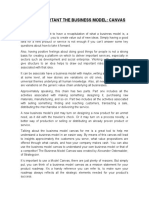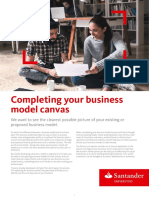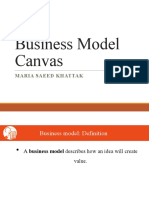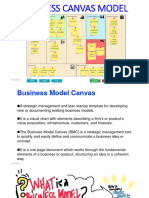0% found this document useful (0 votes)
16 views4 pagesBusiness Model Canvas Explained
The Business Model Canvas (BMC) is a visual tool that outlines key components necessary for starting a business, including customer segments, value propositions, and revenue streams. It serves as a guiding principle for product roadmaps, ensuring that essential strategic elements are consistently incorporated for success. The Lean Canvas is a simplified version that can be used for quick planning and idea development.
Uploaded by
roel.masangcayCopyright
© © All Rights Reserved
We take content rights seriously. If you suspect this is your content, claim it here.
Available Formats
Download as DOCX, PDF, TXT or read online on Scribd
0% found this document useful (0 votes)
16 views4 pagesBusiness Model Canvas Explained
The Business Model Canvas (BMC) is a visual tool that outlines key components necessary for starting a business, including customer segments, value propositions, and revenue streams. It serves as a guiding principle for product roadmaps, ensuring that essential strategic elements are consistently incorporated for success. The Lean Canvas is a simplified version that can be used for quick planning and idea development.
Uploaded by
roel.masangcayCopyright
© © All Rights Reserved
We take content rights seriously. If you suspect this is your content, claim it here.
Available Formats
Download as DOCX, PDF, TXT or read online on Scribd
/ 4


























































